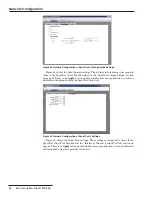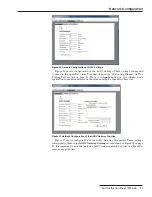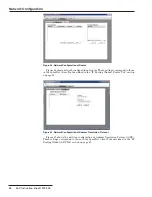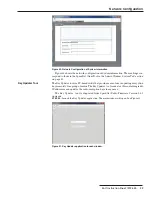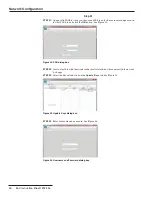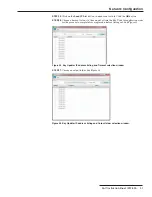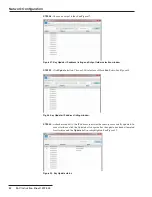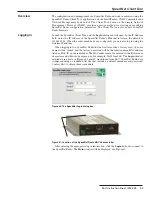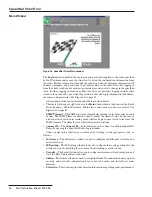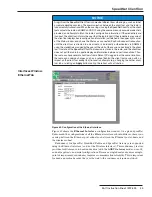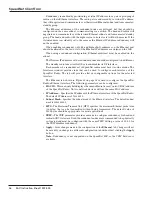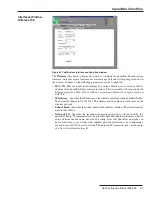
36 S&C Instruction Sheet 1072-530
SpeedNet Client Tool
Redundancy is enabled by provisioning a virtual IP address for a pair or grouping of
radios on their Ethernet interface. The radio pair is addressed by is virtual IP address;
they will negotiate and communicate over their wired Ethernet subnet and form a master/
standby group.
The Ethernet addresses of the redundant nodes are different, but they should be
configured on the same subnet, communicating via a switch. The head-end radios will
negotiate and communicate over their wired Ethernet subnet and form a master/standby
group. The head-end radio with the higher value in its last octet will be the master. If the
virtual address is accidently set to the same as the Ethernet IP address, redundancy will
not be enabled.
When enabling redundancy, only /24 and higher LAN addresses on the Ethernet port
should be allowed so the last octet of the Ethernet IP addresses are unique on the LAN.
When using a redundant configuration, Ethernet multicast must be enabled on the
subnet.
The Wireless IP addresses of the redundant nodes should be configured to be different.
The standby radio takes itself off the air and disables its RF interface.
Each member of a redundant set of SpeedNet radios must have its own antenna. The
Interfaces window provides tabs that can be used to configure each interface of the
SpeedNet Radio. The tab will provide a list of configurable options for the selected
interface.
The Ethernet tab, shown in Figure 63 on page 35 is used to configure the SpeedNet
Radio’s Ethernet interface. The following parameters can be configured:
• MAC ID
—
This read-only field displays the unique Media Access Control (MAC) address
of the SpeedNet Radio. No two network devices will use the same MAC address
• IP Address
—Specifies the IP address of the Ethernet interface of the SpeedNet Radio.
The default IP Address is 192.168.200..
• Subnet Mask
—Specifies the subnet mask of the Ethernet interface. The default subnet
mask is 255.255.255.0
• MTU
—The Maximum Transmit Unit (MTU) specifies the maximum Ethernet packet size
(in bytes) that can be transmitted without being fragmented. The default value of
1500 bytes should be appropriate for most applications
•
VRIP
—The VRIP parameter provides a means to configure redundancy for head-end
radios/AODV Gateways. Both the redundant nodes are recommended to be physically
co-located and must be configured with the same VRIP. Setting a value of 0.0.0.0 for
the VRIP disables redundancy
• Apply
—Saves changes made to the configuration of the
Ethernet
tab. Changes will not
be saved if you change to a different configuration tab without first clicking the
Apply
button
Note:
Redundancy is not supported on the SpeedNet ME, so the VRIP field is not
available





